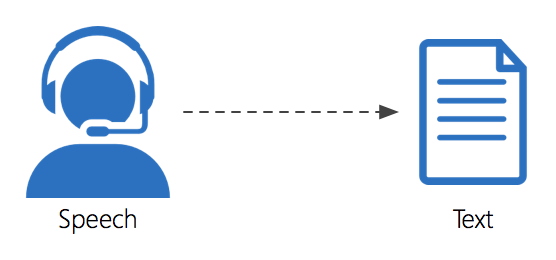
Google’s Speech-to-Text technology has revolutionized the way we interact with devices, making it easier to communicate and access information in a hands-free manner. This article will explore the key features, applications, and benefits of Google’s Speech-to-Text, as well as discuss its accuracy and limitations.
Overview of Google’s Speech-to-Text
Features
Google’s Speech-to-Text technology is based on advanced machine learning algorithms and offers a variety of features:
- Automatic Speech Recognition (ASR): Google’s ASR technology can convert spoken language into written text in real-time.
- Support for multiple languages and dialects: Speech-to-Text supports over 125 languages and dialects, making it accessible to a global audience.
- Contextual understanding: The system can understand context, recognize multiple speakers, and adapt to different accents.
- Noise cancellation and filtering: Google’s Speech-to-Text can filter out background noise and focus on the speaker’s voice.
- Customization: Developers can train the system to recognize specific vocabulary, jargon, or acronyms relevant to their industry or application.
Applications
Google’s Speech-to-Text technology has numerous applications across various industries:
- Transcription services: Converting audio and video files into written text for documentation or accessibility purposes.
- Virtual assistants: Powering voice assistants like Google Assistant for hands-free interaction with devices.
- Voice-controlled applications: Enabling voice commands in apps for navigation, messaging, and more.
- Call centers: Transcribing customer calls for analysis and quality control.
- Education: Assisting students with disabilities and providing transcription services for lectures and class materials.
Benefits of Google’s Speech-to-Text
Improved Accessibility
Google’s Speech-to-Text technology can greatly improve accessibility for individuals with disabilities or those who face challenges with traditional text input methods. Some highlights include:
- Assistive technology: Speech-to-Text can be used in assistive technology devices, such as screen readers, to make digital content more accessible.
- Hands-free interaction: Users with physical disabilities can benefit from voice-controlled applications and devices, reducing the need for manual input.
- Language support: Non-native speakers can use Speech-to-Text to communicate in their native language and receive translations in real-time.
Increased Efficiency and Productivity
Integrating Google’s Speech-to-Text technology into various applications and services can lead to increased efficiency and productivity:
- Faster input: Voice input is often faster than typing, allowing users to communicate more quickly and efficiently.
- Multitasking: Users can interact with devices and applications hands-free, enabling multitasking and reducing the need to switch between tasks.
- Reduced errors: Automatic transcription services can reduce human errors in manual transcription processes, leading to more accurate documentation.
Accuracy and Limitations
Accuracy
Google’s Speech-to-Text technology has made significant strides in terms of accuracy, outperforming many competing speech recognition systems. Some factors that contribute to its high accuracy levels include:
- Deep learning algorithms: Google’s machine learning models are continuously trained on vast amounts of data to improve their understanding of human speech.
- Contextual understanding: The system can recognize context, which helps improve its accuracy in understanding spoken words and phrases.
- Language and dialect support: Google’s Speech-to-Text can recognize and adapt to various languages and dialects, further enhancing its accuracy.
Limitations
Despite its impressive accuracy, Google’s Speech-to-Text technology has some limitations:
- Strong accents: Although the system can adapt to different accents, users with particularly strong accents may still face challenges with recognition.
- Background noise: Although noise cancellation and filtering capabilities are present, excessive background noise can still impact the system’s ability to accurately transcribe speech.
- Specialized vocabulary: While customization options exist, the system may struggle with understanding highly specialized or technical jargon that has not been explicitly trained on.
- Privacy concerns: The use of cloud-based speech recognition services raises concerns about data privacy and security, as audio data is transmitted and processed remotely.
Conclusion
Google’s Speech-to-Text technology has significantly advanced the field of speech recognition, offering a wide range of features and applications that enhance accessibility and productivity. With support for multiple languages and dialects, contextual understanding, and noise cancellation, Google’s Speech-to-Text provides a powerful tool for businesses, developers, and users alike.
However, it is important to consider the limitations of the technology, particularly in situations with strong accents, heavy background noise, or specialized vocabulary. Additionally, data privacy and security concerns should be addressed when using cloud-based speech recognition services.
In conclusion, Google’s Speech-to-Text has the potential to revolutionize the way we interact with technology and communicate with one another. As the technology continues to advance and improve, we can expect to see even more innovative applications and benefits in the future